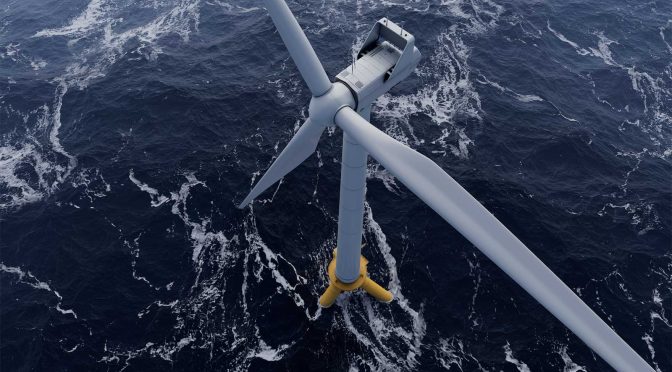Offshore floating wind farms have emerged as a promising solution to the global energy crisis, with the potential to revolutionize the renewable energy sector and significantly reduce our reliance on fossil fuels. These innovative structures harness the power of strong, consistent winds over the open ocean, generating clean, sustainable electricity that can be fed back into the grid to power homes, businesses, and industries.
One of the key advantages of offshore floating wind farms is their ability to be deployed in deep waters, where traditional fixed-bottom wind turbines are not feasible. This opens up vast new areas for wind energy development, particularly in regions with limited shallow water resources. Furthermore, floating wind farms can be located farther from shore, minimizing visual and noise impacts on coastal communities and reducing potential conflicts with other marine users, such as shipping and fishing.
The technology behind offshore floating wind farms has advanced rapidly in recent years, with several successful pilot projects demonstrating the viability of these systems. For example, the world’s first commercial-scale floating wind farm, the 30-megawatt (MW) Hywind Scotland project, began operations in 2017 and has since exceeded performance expectations. Developed by Norwegian energy company Equinor, the project consists of five floating turbines anchored to the seabed off the coast of Scotland, generating enough electricity to power around 20,000 homes.
Another notable example is the WindFloat Atlantic project, located off the coast of Portugal. This 25 MW floating wind farm, developed by a consortium led by EDP Renewables, became fully operational in 2020 and is expected to produce enough clean energy to supply the equivalent of 60,000 users per year. These pioneering projects have demonstrated the technical and economic feasibility of offshore floating wind farms, paving the way for larger-scale deployments in the future.
In addition to their environmental benefits, offshore floating wind farms also offer significant economic opportunities. The global market for floating wind energy is projected to grow rapidly over the coming decades, with some estimates suggesting it could be worth as much as $70 billion by 2050. This presents a major opportunity for countries with strong offshore wind resources, such as the United States, the United Kingdom, and Japan, to become leaders in this emerging industry and create thousands of high-quality jobs in manufacturing, installation, and maintenance.
Moreover, offshore floating wind farms can help to enhance energy security by diversifying the mix of power generation sources and reducing dependence on imported fossil fuels. This is particularly important for countries with limited domestic energy resources, as well as island nations that are heavily reliant on expensive diesel imports for electricity generation.
Despite the numerous advantages of offshore floating wind farms, there are also several challenges that must be addressed in order to fully realize their potential. One of the main barriers is the high upfront capital costs associated with the development and installation of these systems, which can be significantly higher than those for fixed-bottom wind turbines. However, as the technology matures and economies of scale are achieved, these costs are expected to decline, making floating wind farms increasingly competitive with other forms of renewable energy.
Another challenge is the need for robust regulatory frameworks and streamlined permitting processes to facilitate the deployment of offshore floating wind farms. This will require close collaboration between governments, industry, and other stakeholders to ensure that environmental and social impacts are effectively managed and that the benefits of this technology are maximized.
In conclusion, offshore floating wind farms represent a promising solution to the global energy crisis, offering the potential to generate vast amounts of clean, renewable electricity while creating new economic opportunities and enhancing energy security. As the technology continues to advance and overcome existing challenges, it is likely that floating wind farms will play an increasingly important role in the global transition to a more sustainable energy future.


